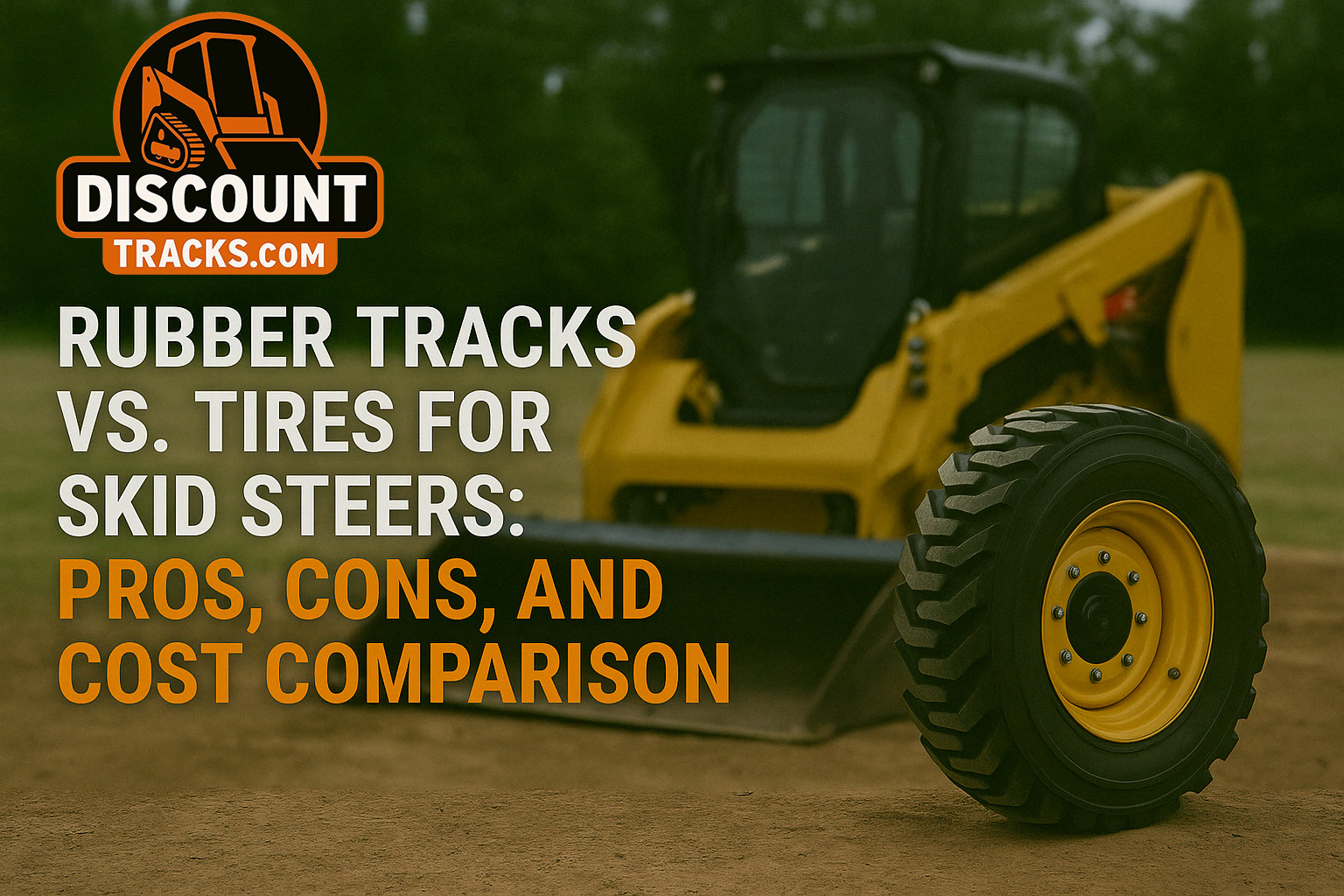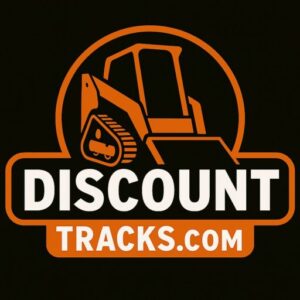Introduction
Skid steer loaders are among the most versatile machines on the job site. But when it comes to maximizing their performance, one crucial decision stands out: rubber tracks vs. tires.
The rubber tracks vs tires skid steer debate isn’t black and white. Each undercarriage type brings unique strengths and drawbacks depending on terrain, application, and budget. Choosing the wrong option could lead to inefficiencies, increased wear, and higher costs.
This guide delivers a clear and practical skid steer tracks vs tires comparison to help you confidently decide which configuration aligns with your operational needs and long-term value goals.
Understanding the Options: Wheeled Skid Steer vs. Compact Track Loader (CTL)
- Wheeled Skid Steer: Equipped with pneumatic or solid tires. Generally lower initial cost, faster travel speed, and better for hard surfaces.
- Compact Track Loader (CTL): Features a dedicated rubber track system. Provides better performance on soft ground and sloped terrain. While often a different machine class, many comparisons center on CTLs vs wheeled skid steers or track conversions.
Head-to-Head Comparison: Tracks vs. Tires on Key Factors
Traction & Stability
- Tracks: Superior traction in mud, sand, snow, and loose gravel. Better weight distribution means increased stability on uneven terrain and slopes.
- Tires: Adequate traction on hard surfaces like concrete and asphalt. Performance varies based on tread design. More prone to slippage in soft or slick conditions.
Flotation & Ground Pressure
- Tracks: Clear winner in skid steer flotation. Tracks spread machine weight over a larger surface area, reducing ground pressure and preventing sinking.
- Tires: Higher ground pressure due to smaller contact points. Can easily sink or rut in soft ground, especially when fully loaded.
Surface Impact & Ground Disturbance
- Tracks: Excellent for protecting turf, lawns, and sensitive surfaces. Low ground disturbance and smoother operation during turns.
- Tires: Can tear up grass or soil, especially during tight turns. Potential for surface scuffing on pavement.
Speed & Maneuverability
- Tracks: Slower travel speed. Counter-rotating on hard surfaces can increase wear.
- Tires: Faster on hard, flat surfaces. Ideal for large job sites or when road travel is involved. Smoother turning on pavement.
Operator Comfort
- Tracks: Smoother ride over uneven terrain. Helps reduce operator fatigue during long workdays.
- Tires: Bouncier on rough terrain, though pneumatic tires absorb shock on pavement.
Maintenance & Durability
- Tracks: Require periodic replacement and attention to rollers, idlers, and sprockets. Vulnerable to sharp debris and improper tension.
- Tires: Can suffer punctures and flats. Solid tires reduce this risk but are more expensive. Rims typically require less attention.
Cost Comparison (Initial & Operating)
- Initial Cost: CTLs cost more upfront than wheeled skid steers. Rubber tracks are more expensive than tires.
- Operating Cost: Tires are cheaper to replace individually but wear quickly on abrasive surfaces. Tracks reduce ground repair costs and excel in longevity for soft-terrain use. Total cost varies by application and maintenance discipline.
Making the Right Choice: Application is Key
Choose Tires If:
- You primarily work on hard surfaces (concrete, asphalt).
- Speed and agility are top priorities.
- Flotation and soft-ground performance are not concerns.
- You’re on a tighter equipment budget.
Choose Tracks If:
- You work frequently in mud, sand, snow, or loose dirt.
- Surface protection and minimal disturbance are important.
- Your sites include slopes or uneven terrain.
- You want better traction, flotation, and long-term versatility.
The Power of Quality Rubber Tracks: The Discount Tracks Advantage
When your work demands tracks, quality matters. Inferior tracks can cost more in downtime, repairs, and wear.
At Discount Tracks, we supply premium rubber tracks for skid steers and CTLs designed to deliver top-tier performance in real-world applications. Our tracks feature:
- Advanced tread patterns for superior soft-ground traction
- Tough internal construction for durability
- Smoother operation and reduced undercarriage wear
Whether you’re in landscaping, utilities, snow removal, or general contracting, Discount Tracks provides high-value aftermarket solutions to lower your skid steer operating cost while maximizing uptime.
Conclusion
Ultimately, the rubber tracks vs tires skid steer choice depends on where and how you work. Tracks offer unparalleled flotation, stability, and soft-ground performance. Tires excel on hard, flat surfaces and high-speed travel.
Matching the right undercarriage to your job sites ensures better performance, lower maintenance, and long-term savings.
If flotation, soft-terrain traction, and surface protection are your priorities, rubber tracks are the clear winner.
Explore our full selection of aftermarket skid steer tracks at DiscountTracks.com or contact our experts to find the best track solution for your machine.


